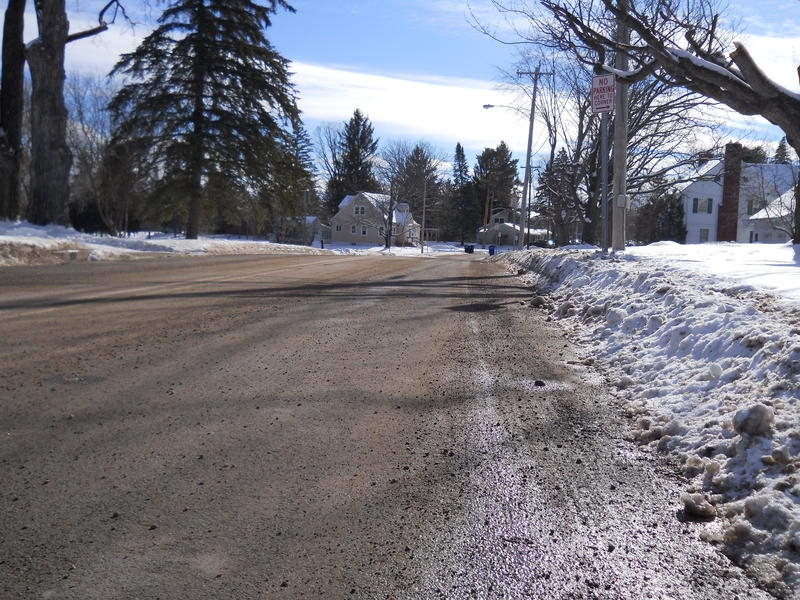
Road Salt's Distasteful Effect
As anyone who lives in the North Country knows, winter can be tough on drivers. Slick black ice and quicksand-esque snow are a danger to everyone on the road, and should be taken seriously. Aside from plowing and driving with care, the use of calcium chloride, better known as road salt, leads the charge in combatting dangerous road conditions. Keeping the roads safe, however, comes at a cost.
The New York Department of Transportation deposits 836,020 tons of salt, 44,761 tons of treated salt, and 176,691 gallons of liquid magnesium chloride on New York’s roads per winter. This amounts to 1.8 billion pounds of salt, and that’s not even counting the liquid calcium chloride, salt brine, and abrasives that are also used for snow control.
So, where does it all go? Once the snow melts or a snowplow blows through, all that salt drains off the road and into ponds, streams, aquifers, agricultural fields, and roadside soils. In a study of road salt’s effect on water sources, scientist Dan Kelting of Paul Smith’s College found there to be eighty milligrams of chloride per liter in a brook downstream from Route 30 just a few miles away from the school. This level of calcium chloride is more than 160 times the concentration of a normal stream. What that means for the aquatic ecosystem is a stratified and anoxic (void of oxygen) bottom layer, which is rendered incapable of supporting life.
The introduction of salt into the water also leaches toxic metals from submerged rocks, which can poison fish, insects, and macroinvertebrates and decrease oxygen levels in the water. On land, these salts crowd the soil and displace healthy nutrients, causing soil leaching, which is the loss of soil nutrients due to rain or irrigation.
The overcrowding and displacement of these important nutrients results in decreased soil fertility. Leaching has profound negative impacts on ecosystem health. When nothing can grow in the soil, the entire community suffers. Vegetation from the tallest white pine to the most delicate honeysuckle bush can be sensitive to salt, and constant exposure in large amounts is deadly. Salt-sensitive species of vegetation may die off, which effects all organisms upwards in the food chain and makes way for invasive species to take hold. Birds who ingest seeds or grit contaminated with salt die or become ill with salt toxicity, and larger animals who drink salt-infused water become dehydrated when they attempt to relieve their thirst.
Humans, too, can be directly affected by road salt if a drinking water source becomes contaminated. This phenomenon is rare, however, as only 2 percent of drinking wells sampled by the United States Geological Survey (USGS) where found to have chloride levels above federal standards.
What is being done about this issue? The ADK Action organization has hosted several salt seminars in partnership with Paul Smith’s College to educate local and state officials about the effects of salt overuse. This has led to a 30 percent decrease is salt use per lane, but more still needs to be done. The Department of Transportation strives to achieve environmental consciousness while still keeping the roads safe; testing double bladed plows and pre-storm anti-icing liquids to reduce the amount of salt laid down in winter months. Natural and eco-friendlier deicers (such as calcium magnesium acetate, which does not harm vegetation and has a very low toxicity) exist which are certainly not being used to their full potential.
Individuals can also make a vast difference in the health of their ecology. Cutting back on icing front steps and sidewalks, using Yaktrax instead of salting at all, and becoming educated in the effects of salt on the environment are necessary steps to improving the well-being of the North Country landscape we call home.

